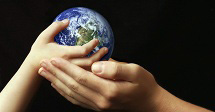WHSEP UPDATE: As of January 2012, all applicant spaces have been filled. If you would like to add yourself to our waiting list, please complete the short online SOLAR SURVEY accessed from the left column of our newsletter.
Hawaii’s Energy Goals
By 2030, the State of Hawaii aims to obtain 70% of its energy from clean sources: 40% from renewables, 30% from energy conservation.
This is the highest clean energy target in the United States!
We can each become part of the solution to Hawaii’s high cost energy problem.
Why Hawaii’s Energy Costs are so high
The Big Island of Hawaii faces one of the highest electricity costs in the United States, averaging over $.42 kwh when mainland locations are often under $.10 kwh.
The high cost of energy on the Island is in large part because we primarily rely on the volatile costs of imported oil that is tankered-in from over 2,500 miles away in order to operate the utility company’s out-dated diesel turbines that provide about 70% of the island’s electricity.
Where our electricity comes from
Population and energy use is now split fairly evenly between the west and east sides of the island yet 75% of the island’s electricity is generated on the east side of the island. This means that the west side of the island is only producing 50% of its own electricity locally, the remainder being transported long distances from the other side of the island.
 Fortunately, the Big Island does have the benefit of innovative Independent Power Producers who shoulder the cost of power generation equipment installations and maintenance. These IPP generate power and then sell electricity to the main utility, HELCO, thereby providing a growing share of our electricity production. (Our rates would be even higher if HELCO had to build these production facilities and pass those costs on to their consumers. HELCO’s parent corproation, HECO has a valuable web site with renewable energy goals and methods accessed by clicking here)
Fortunately, the Big Island does have the benefit of innovative Independent Power Producers who shoulder the cost of power generation equipment installations and maintenance. These IPP generate power and then sell electricity to the main utility, HELCO, thereby providing a growing share of our electricity production. (Our rates would be even higher if HELCO had to build these production facilities and pass those costs on to their consumers. HELCO’s parent corproation, HECO has a valuable web site with renewable energy goals and methods accessed by clicking here)
Hawaii’s potential for renewable energy
Big Island power has the potential to harness virtually unlimited solar, wind, wave, hydro, algae bio-fuel and geo-thermal sources. Recently growths in power provided by Independent Power Producers (sold to the main utility company) are making signficant strides in diversifying our energy sources via renewable technologies. Over 30% of the Big Island’s energy is now generated using renewable technologies provided by innovative Independent Power Providers. This is a great start towards energy independence and environmental protection. It also allows the utility to focus its resources more on improving their current electricity generation and transmission, and less on the costs of developing new facilities for power generation.
West Hawaii’s energy potential
We’ve got it – let’s use it!
The west side of the Island has the highest sustained winds for electricity- generating wind turbines, north in Hawi and south near Na’alehu.
The west side of the island has the most hours of sun light to power solar collectors and is home to the largest solar-pv-powered resort complex in the world, the Mauna Lani (currently generating about 10% of its electricity demands via solar power). The Natural Energy Lab of Hawaii (NELHA) is also sponsoring new innovative non-photo-voltaic solar and thermal technologies just north of Kailua-Kona.
With no surface waters, the west side can not develop hyrdo-eletricity and the access to geo-thermal activity is not as feasible on the west as it is on the east where more active volcanic rift activity exist.
Wave technology
Solar and wind technologies are the most immediately accessible, viable renewable energy solutions for West Hawaii. Thermal sea water and tidal/wave technologies are also possibilities currently being explored.
If the west side is only generating 50% of its own energy, we can set a goal to generate the other 50% through investments in renewable energies and increase our local independence.
We need our government agencies and the utility company to develop incentives for both large scale renewable AND local small-scale power production.
Proven models for local consumer-generated production already exist and can easily be replicated for West Hawaii.
Hawaii Renewable Energy Information:
Hawaii’s Energy Future Campaign
South Point Wind Farm, Pakini Nui
Scientific American article on Hawaii Energy Goals
Small Wind for Hawaii Pamphlet













